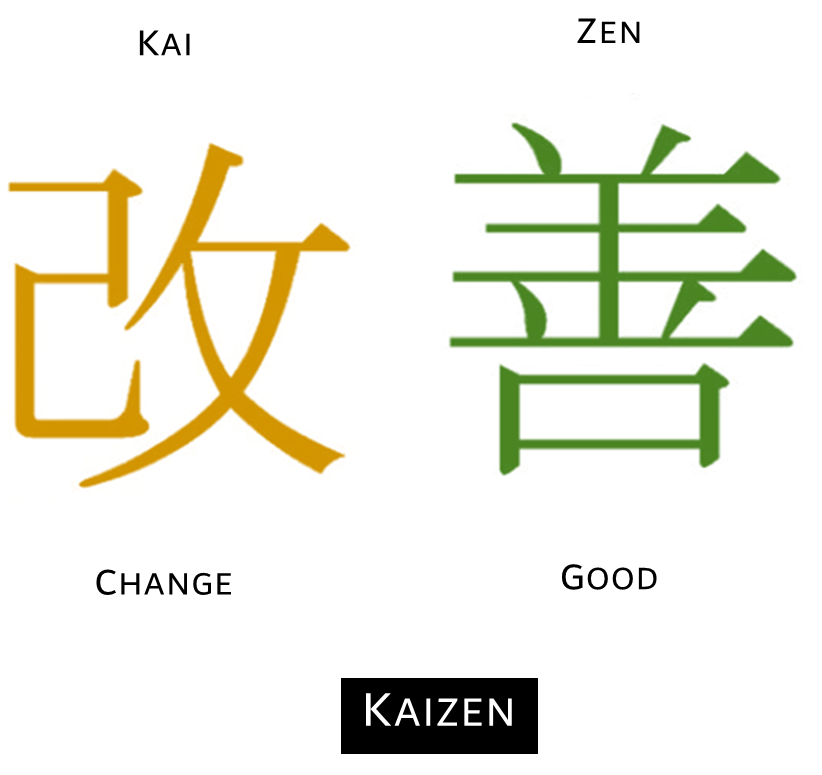Kaizen is a Japanese term. The word ‘Kai’ means ‘Change’ and ‘zen’ means ‘For the Better or Good’ or « Change through everyone’s participation, in order to bring about benefits to everyone and change forever or Continuous Improvement ».
Thus, Kaizen is the gradual, incremental, and continual ‘improvement’ of activities so as to create more value and less non-value-adding waste”. Kaizen is often considered to be the "building block" of all lean production methods. Its strategy aims to involve workers from different operations and levels in the organization to work together to address a problem or improve a process. Different terms used to define kaizen are Point, Line, Plane Cube; Kobetsu Kaizen; Kaizen Blitz, Gemba Kaizen, etc.
The main components of kaizen can be summed as:
- Continuous improvement: it’s the core of Kaizen. This must be done on a regular basis and does not have an end goal.
- Teamwork: Kaizen can be successful only if the team works together. It is important to continuously train employees of all levels on how they can add value.
- Elimination of Waste: Eliminating waste is one important aspect of Kaizen.
- Quality circles: Quality circles are crucial to teamwork and Kaizen as a whole. Quality circles are groups of workers and individuals related to similar job functions.
- Standardization: Standardization of work is usually considered as the base of Kaizen.
- Observe for yourself, follow the action: Involvement of the management for continuous improvement plays a big role.
- Empowering people: Kaizen is not only about involving people from all levels but empowering them as well. It is best when employees feel comfortable in bringing suggestions to the top level.
The basic steps for implementing a kaizen ‘event’ can be mainly categorized as follows:
- Planning and Preparation.
- Implementation: The team works to develop a clear understanding of the issue of the targeted process so that all team members’ proper understanding of it. The techniques commonly used to define the issue and identify manufacturing wastes are Five Whys, Jishuken, Value Stream Mapping, Gemba, and PDCA Cycle.
- Follow-up: A key part of a kaizen event is the follow-up activity. It aims to ensure that improvements are sustained and not just temporary.
Kaizen can uncover hidden wastes or waste-generating activities and eliminate them. It does not require large capital investment. Provides quick, sustained results.



